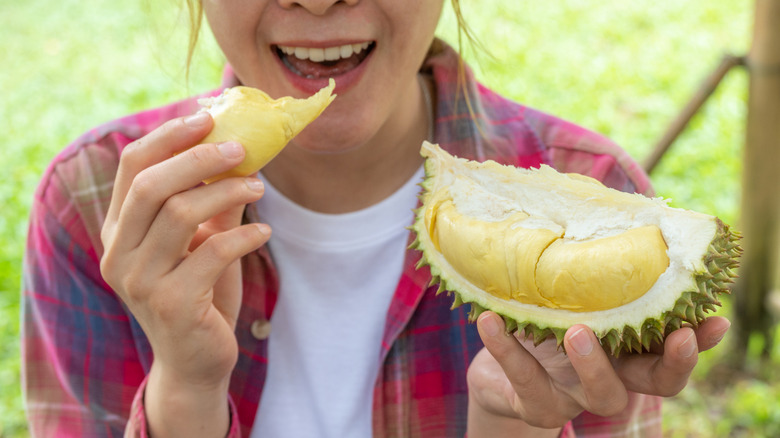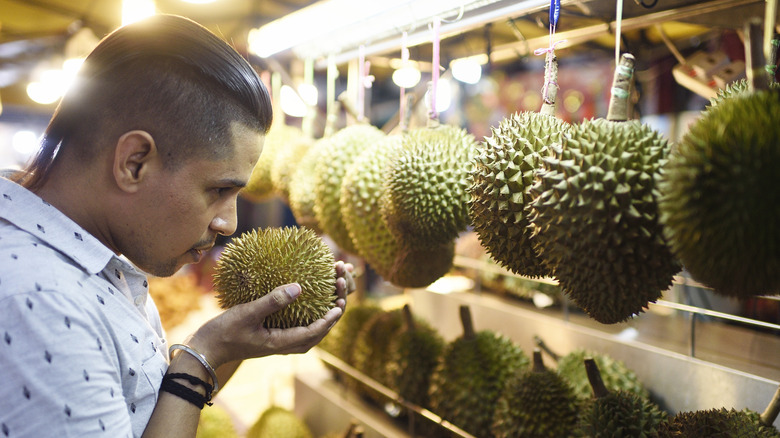
Think about the aroma of your favorite fruit. Is it sweet? Perhaps floral? If it has a pleasant scent, then it’s certainly not the tropical fruit that is rich in potassium and magnesium but challenging for the nose to appreciate. (However, if you can get past its odor, your taste buds are in for a treat.) Known as durian, this fruit offers a delightful sweet-bitter flavor mix despite its sulfurous smell. (It’s not all negative, although it does have an unusual appearance with its tough, spiky exterior.)
From a cardioprotective perspective, durian is a nutritional powerhouse. A single cup of durian contains 1,060 milligrams of potassium, 72.9 milligrams of magnesium, and 9.23 grams of fiber. Each of these nutrients is known for its ability to reduce blood pressure, making durian worth seeking out, even though it can be hard to find in the United States.
Consider the positive impact potassium can have on your blood circulation. When your sodium levels get too high, potassium helps remove the excess to prevent an electrolyte imbalance in your body. This is desirable because excessive sodium is linked to high blood pressure. Therefore, consuming potassium-rich foods like durian may help you maintain healthier blood pressure levels.
Nutritional benefits from a pungent treat

Magnesium can influence blood pressure readings. According to a 2017 review in the American Journal of Clinical Nutrition, individuals with noncommunicable and insulin-related conditions who took extra magnesium (between 365 and 450 milligrams) daily experienced reductions in their blood pressure readings. Although the precise mechanism was unclear, the reviewers speculated it might be due to magnesium’s ability to reduce blood vessel resistance through various means.
The fiber in durian can also benefit your blood pressure. A 2024 review in Hypertension suggests that consuming an additional five grams of fiber daily can lower systolic and diastolic blood pressure readings by 2.8 and 2.1 millimeters of mercury (mmHg), respectively. A cup of durian provides nearly double that amount. You might wonder if all this information about potassium, magnesium, and fiber is purely theoretical, but research findings are where things become complex.
Uneven clinical findings despite a nutrient-rich profile

Although durian seems to have all the characteristics of a fruit that can lower blood pressure, it hasn’t consistently demonstrated this in clinical settings. For instance, a 2016 study in the International Journal of Food Properties examined the blood pressure effects of high and low doses of durian. Low doses didn’t seem to affect blood pressure, while high doses increased blood pressure readings.
A 2018 study in Sains Malaysiana found that hypertensive rats given a low dose of durian flesh experienced a slight decrease in blood pressure. However, rats given higher doses showed elevated blood pressure. Ultimately, low doses of durian were considered safe for hypertensive rats.
A 2020 paper in the Indonesian Journal of Global Health Research reviewed the functional and protective benefits of durian. Based on findings from 18 studies, durian appeared to have no effect on blood pressure in individuals with normal blood pressure (here’s what a normal blood pressure level looks like) but could increase blood pressure in those with hypertension.
Confused? Complicated? Yes, but there’s no need to abandon durian; it remains inherently nutritious. You might just not be able to rely on it to lower your blood pressure. Instead, consider durian as a potential addition to your heart-healthy diet and a novel sensory experience.




